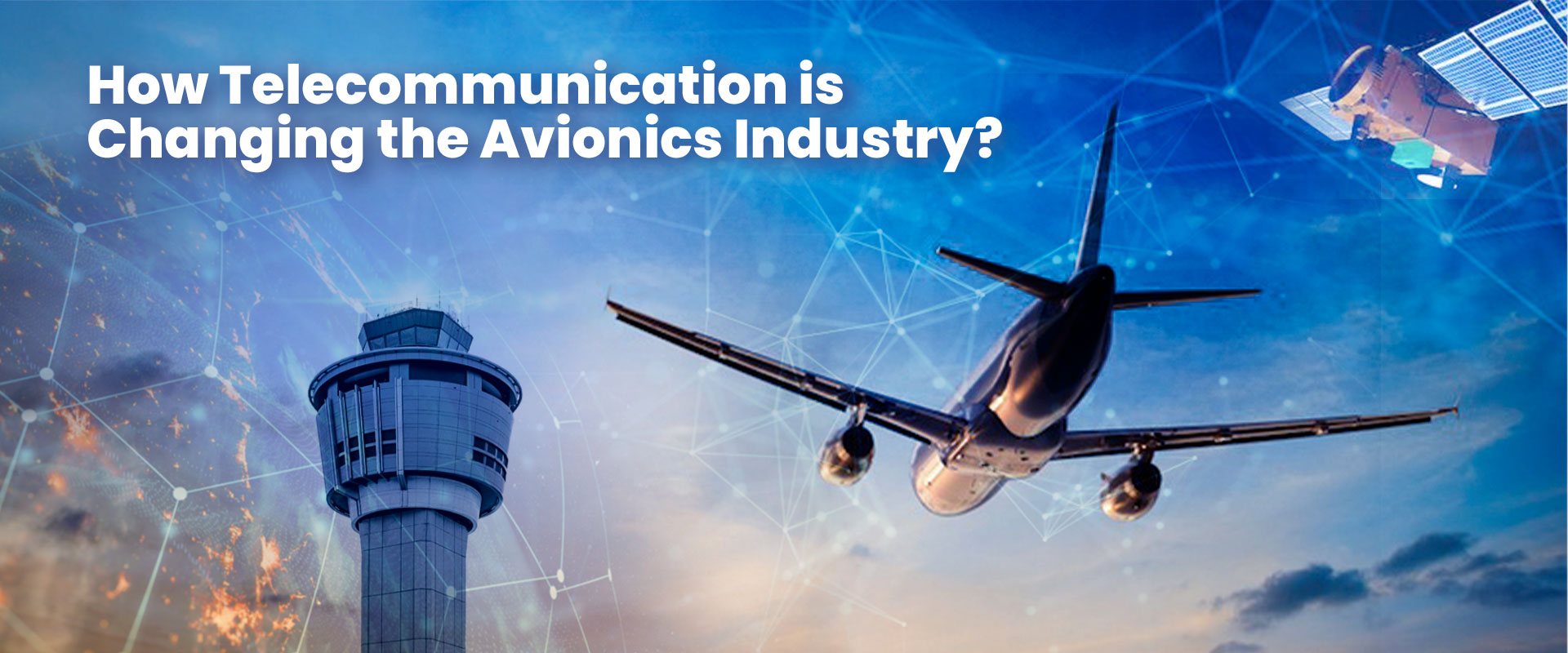AVIONICS- AN OVERVIEW
Basically, it is a mixture of terms “aviation” and “electronics” verbally as well as technically. It deals with the electronic systems part of the aircraft, artificial satellites, space crafts, etc. The electronic maintenance part of aircraft includes communications, management, display, navigation which can be done through avionics.
Being the core platform for the aerospace systems such as civil commercial aircraft, fighter aircraft, Unmanned Aerial Vehicles (UAV), and airborne early warning and surveillance aircraft, avionics helps both civil and military aviators.
Looking back into the evolution of avionics in 1903, the Wright brothers had no access to avionics, as times changed, the electronic world started occupying the aviation industry. As the technologies of electronics started upgrading, the aircraft designers have started modernizing it with more advanced functions.
Modern aircraft introduce Flight Control systems (FCS) with aircraft procedures embedded in an FCS computer.
Military aircraft have integrated avionics systems that help with radar and electro-optics, electronic warfare systems, data fusion, weapon management computers. Hence avionics on the whole is playing a major role in the advancement of the aviation systems by modernizing the traditional boundaries between the systems and functions associated with the aircraft.
The condition, status, and health of systems avionics, FCS, and mechanical systems are monitored in real-time resulting in higher safety of aircraft and improved maintenance which in turn reduces the operating cost and increases the availability of aircraft. Avionics is the basis of the modern cost-effective technology of Integrated Vehicle Health Management System (IVHM) associating status monitoring, fault detection and analysis, diagnostics, and prognostics.

THE PRIME OPTION: GOING WIRELESS
Flying thousands of miles above the ground level requires weight maintenance. For weight being a major concern, the wires used in constructing adds ambiguity. With the advancement in almost everything, avionics overcomes the mentioned unease by cutting down the usage of wiring.
Weight minimization being the utmost priority of modern-day aircraft, wireless connectivity becomes evident. This sequentially reduces the risks of fuel burn and eventually increases the mission capability. Hence, cable-less avionics for the win.
The conveniences include:
- Weight reduction
- Wireless sensing
- Command
- Control
- PHM schemes
- East system maintenance
It is also proven to be a convincing factor for the rotating and moving parts (wheel wells, actuators, etc.) of the produce. And also makes the maintenance and tracking of the data much more efficient and accurate. Along with the reduced downtime for reconfigurations, this has supported maintaining a life cycle.
So, who doesn’t like overall comfort when it comes to improving modularity and expandability? This significantly helps with changing cabin layouts during turnaround times. The revolution of avionics has also made it more reliable since it can take control of multiple levels of frequency, time, and path.
Sometimes, human extracted data could be less accurate, which could lead to major discomfort and loss of resources. Also, who would consider tracking down all the data manually? So the avionics has kept human laziness into consideration and provided a helping approach with error-free data tracking.
Transmission of data is crucial for any industry to grow and develop, especially for the aviation industry. Modern aircrafts and airlines are capable of generating a significant amount of data and the industry needs up-to-date telecommunication systems to process and properly analyze those data. The wave of digital revolution across the business world has encouraged the aviation industry to adopt latest technologies such as artificial intelligence, industry 4.0, Internet of Things (IoT), etc. As a result, a well secured and advanced network is needed to implement these technologies.
Apart from all the technical errors and concerns, the wired approach might also be leading to loss of life and resource. Some reports reveal that the major cause of smoke fires and fumes could possibly be the wiring. This might create a significant impact on the passenger experience.
THE (G)OLD WAYS
The wireless avionics for intra-aircraft communications like WAIC (Wireless Avionics Intra Communication) was introduced by the Aerospace Vehicle system Institute. The WAIC has to deal with the radio communication between two or more nodes in an aircraft internally as well as externally. The projects based on the broadband mobile communication networks such as ultra-wideband technology and 6oGHZ technology have been set up at fraunhaufer institute of telecommunication for the development of WAIC. However, drawbacks of the above mentioned technologies like low range and noise production make them not suitable with the modern standard.
IMPLEMENTATION OF 5G
The implementation of 5G technology will create a significant impact in the aviation industry. Its advanced capabilities of Enhanced Mobile Broadband (eMBB), Ultra Reliable Low Latency communication (uRLLC) and Massive Machine Type communication (mMTC) are considered ideal for critical business applications in the aviation industry. According to Markets And Markets, 5G market in the aviation is expected to reach 3.9 billion USD by 2026. Allied Market Research reported that the market size of 5G in aviation will reach 4.68 billion USD by 2026. Demand for a better flight experience and requirement of faster internet connection at airports are identified as primary reasons for this growth.
Without a doubt, implementation of 5G technology in the airline industry will enhance each and every elements of the aviation development. In the recent tech summit held at Bengaluru, 5G is considered as “a next stage of maturity”. Airlines deal with an ample amount of data and estimation states that a global fleet can generate almost 100 million terabytes of data by 2026. As a result, 5G technology would be ideal for transmission and interpretation of such a large scale data.
With the emerging communication technologies and an improved Information and communications Technology (ICT), the aviation industry will encounter a significant increase of opportunities in the field of big data, operational efficiency and automation. It will enable the aviation sector for experiencing the further development of IoT.
With the influence of telecommunications in the aviation industry, there is a high demand of an efficient service provider that has in-depth knowledge about modern technologies related to telecommunications. Alpha Numero Technology Solutions (ANTS) is one of the leading organizations that provides telecommunication services and solutions. The ANTS group is responsible of delivering telecom services such as digital transformation of communication service providers, cloud native, network design and customization, network testing, system integration and advanced network services.


